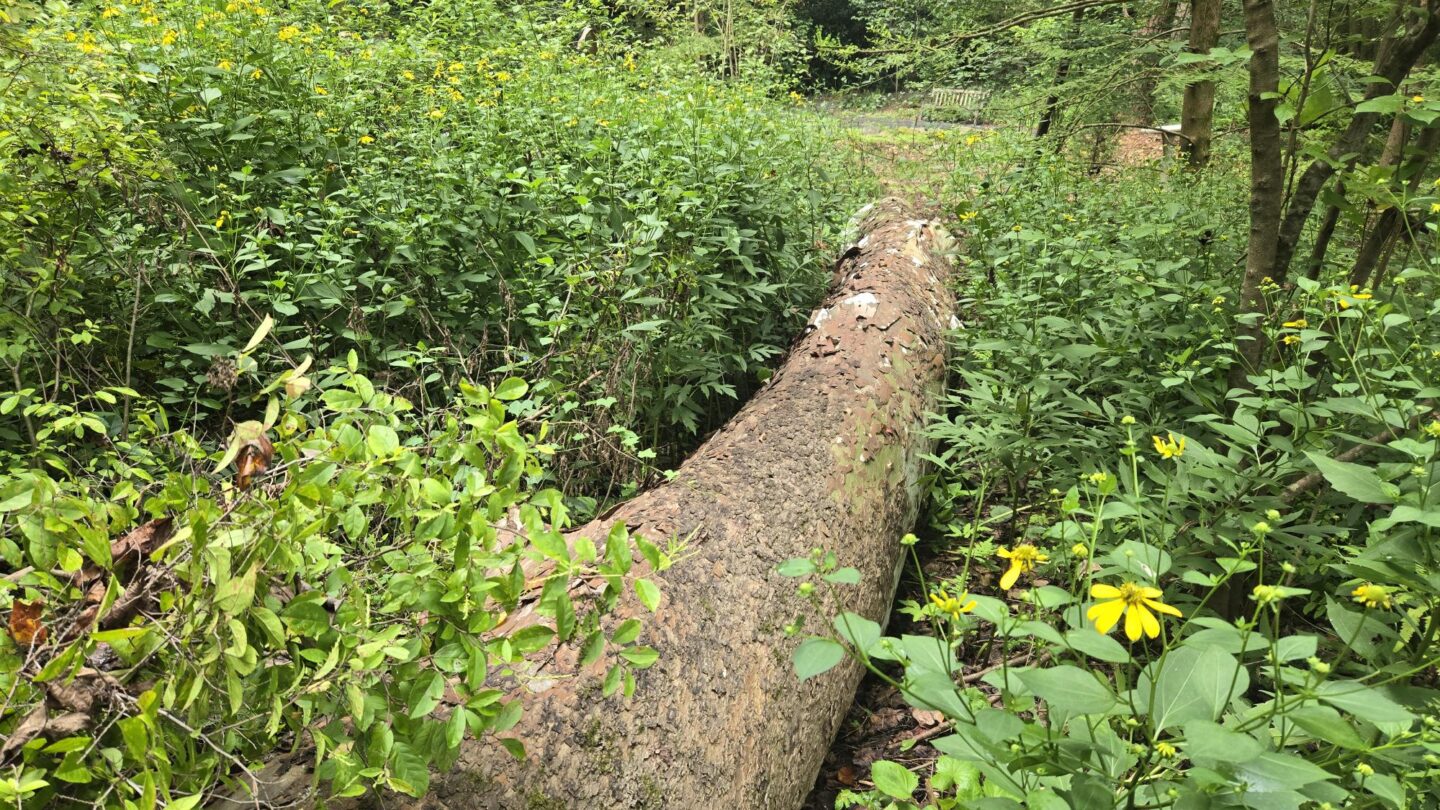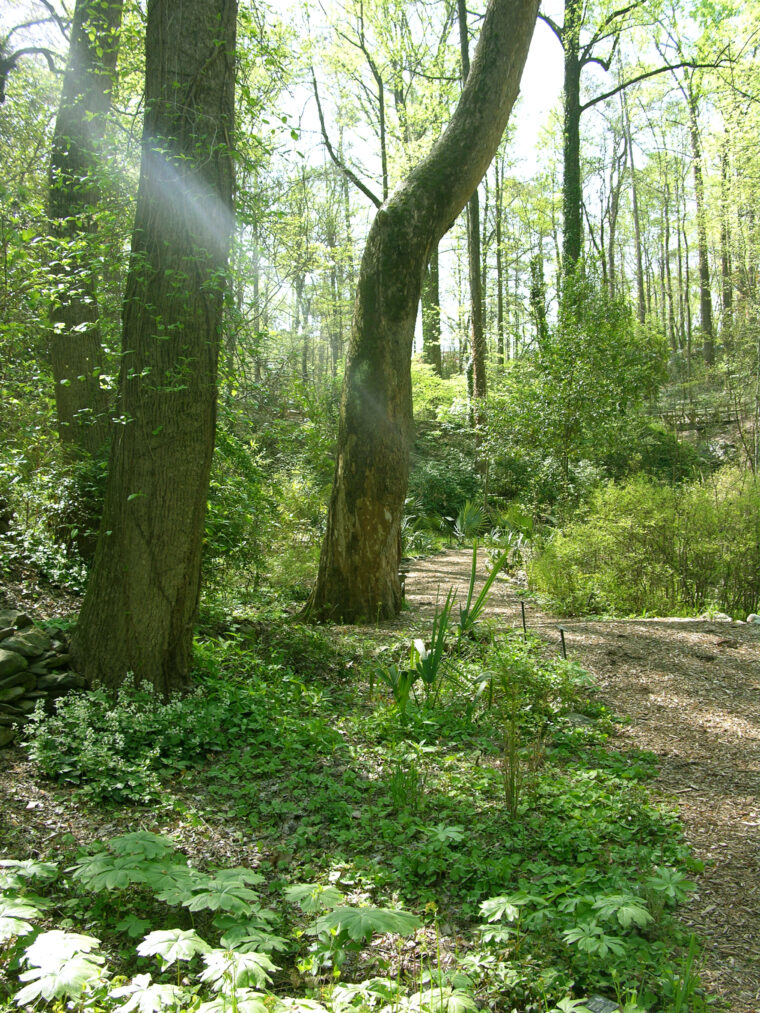Grand tree of beauty
You stood proud for many years
We will remember

Photo by Tiffanny Jones
Several weeks ago, a large American sycamore tree growing in the Quarry Garden at the Atlanta History Center succumbed after many years of decline. When the tree was cut into sections for removal, the opportunity was afforded to Goizueta Gardens staff to count the tree rings, the yearly record of this sycamore’s life.
In total, between 80 and 90 rings could be made out, putting the trees first ring formation around the year 1935. Most trees don’t begin forming regular annual rings until they are several years old, so it is safe to assume that this sycamore was a seedling around 1930 or so, just a few years after the Inman’s moved into the nearby Swan House and close to the time when Mr. Inman died unexpectedly.
The Great Depression had just begun the previous year, but I doubt the sycamore noticed. Its leaves would have felt the unusual darkness of Dust Bowl storms and collected light from the sun while the world descended into World War II. The Civil Rights Movement, Vietnam, yuppies and Reagan, the end of the Cold War, 9/11, the Great Recession; all this tumult was background noise to the tree, as it slowly enacted each year’s leaf out, the long photosynthesis of the summer, and the slumber of autumn and winter.

Sycamore in spring 2010. It has a natural bend in the trunk.
Photo by Sarah Carter
American sycamore (Platanus occidentalis) is one of 12 or so species within the Platanus genus. In North America, sycamore trees can be found east of the Great Plains and in the Southwestern United States and California, as well as in Mexico. The species found in the eastern United States are closely related to species found in eastern Mexico, while the western United States species are found in western Mexico as well. Outside of North America, there is only one other Platanus species, Oriental plane (Platanus orientalis), found in the eastern Mediterranean through Turkey, Iran and the Caucasus to the western Himalaya. Interestingly, the western North American species are more closely related to this Eurasian sycamore than they are to the species found in the eastern United States and Mexico.
American sycamore is the largest tree species in terms of diameter east of the Great Plains and is rivaled only by the tulip poplar in height. George Washington recorded an individual in the Ohio Valley in the 18th century with a circumference of 44 feet, and some modern examples measure nearly 30 feet around. American sycamore is a fast growing tree and is almost always found in the floodplains of rivers and streams, growing in deep alluvial soils. These trees are easily distinguished by their white trunks and scaly, exfoliating bark.
Though the tree in the Quarry Garden no longer stands, it lives on as a habitat for wildlife. A section of the trunk was left on the ground and will decay and provide a substrate for countless fungi, a nesting place for beetles and other insects, and a hollow shelter for small mammals and reptiles. Only days after the tree succumbed, new sprouts started to grow from the stump, a testament to this tough and resilient species.

The sycamore in 2020. Many guests had an opportunity to rest under its shade.
Photo by Sarah Carter

